Some of the links in this post may be affiliate links.
Often known as the “King Anthurium”, Anthurium veitchii (pronounced VEET-chee-eye) is a stunningly gorgeous species that hails from Colombia. It is one of the largest epiphytic Anthuriums, growing on trees instead of in the ground, and the leaves can easily get up to 4-6 feet long in good conditions.
The species name veitchii pays homage to Scottish horticulturist John Veitch who introduced a large number of exotic species to Europe.
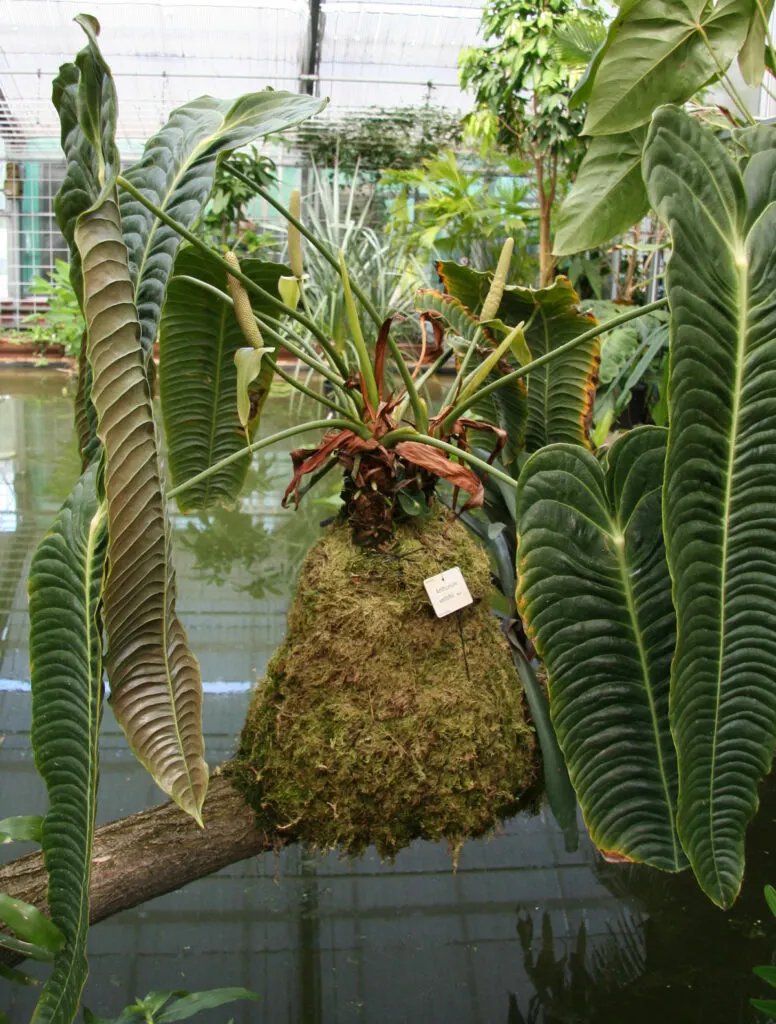
Table of Contents
VEITCHII NARROW VS. WIDE FORMS
You’ll often see a “narrow form” or “wide form” available. This refers to the corrugated leaves and how close or far the lateral veins are.
The narrow form has the veins closers together, and in the wide form, they are further apart.
Once rare, Anthurium veitchii is now much more commonly available as a result of tissue cultured specimens being sold.
Juvenile leaves will look a bit different and it takes some time before the beautiful corrugated texture becomes more pronounced on the foliage, at which point they will also feel thick and leathery.
The heart shaped juvenile leaves will also be a bronzy/rusty color.
ANTHURIUM VEITCHII CARE INDOORS
1. LIGHT
These plants are epiphytes in nature and will be found growing on tree branches, growing in predominantly filtered light.
Indoors, don’t be afraid to provide some direct sun (especially during winter time), but being careful not to expose your plant to too much.
An eastern exposure window, with gentler morning sun, would be ideal. If you have any windows that are very sunny, you may wish to diffuse the direct sun with sheer curtains or blinds.
2. WATERING & FERTILIZING
These are not drought tolerant plants and should be watered freely. Of course, this goes hand in hand with being able to provide a nice, open, airy potting mix since they grow as epiphytes in nature, typically attached to trees.
Aim to provide a moist potting mix that dries out somewhat, but not completely.
Always soak your plant thoroughly when you do water.
Use a good fertilizer throughout the active growing season. For most of my plants, I love use Dyna-Gro Grow.
It’s urea-free and contains all the macro and micro nutrients that plants need. I like to fertilize at every watering (1/4-1/2 teaspoon per gallon of water) and periodically just use plain water to water in order to flush out any accumulated fertilizer salts.
Avoid fertilizing during dark periods of the year and periods where the plant is not growing. If you have good light year round, you can fertilize year round.
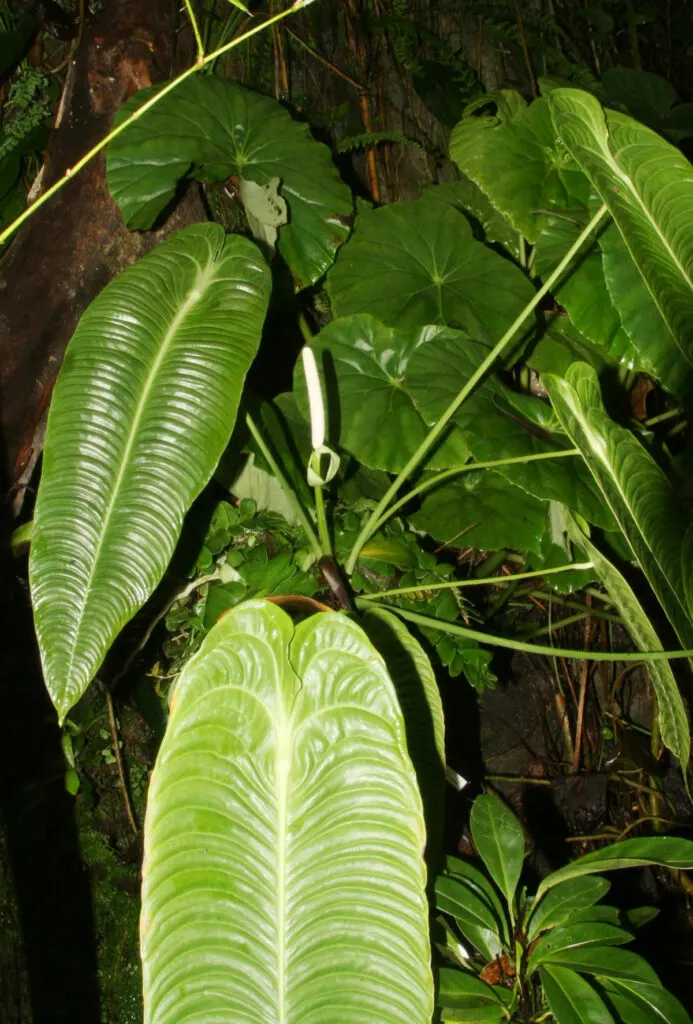
3. POTTING MIX & POTS
Never pot up this plant in straight, all-purpose indoor potting mix. It will suffocate the roots and these plants need a chunky potting medium.
Different growers have their own special blends, but many will work, as long as the mixes are airy enough. Some options include:
- Equal parts all-purpose potting mix, orchid bark and perlite with a little horticultural charcoal mixed in.
- Equal parts sphagnum moss and orchid bark.
- Some growers use pure sphagnum moss.
You can play around with the proportions of each of the components of your potting mix to suit your growing environment.
If you grow in pure sphagnum moss, wait until the surface dries before watering again. Sphagnum moss is very moisture retentive.
These plants are best displayed in hanging baskets as they will eventually grow very large and will need plenty of clearance for the leaves to be able to grow freely without obstructions.
Hanging baskets typically sold for Vanda orchids are perfect for this plant. I like to place netting at the bottom of these baskets (you can even use a mesh bag that onions come in) and then fill your basket with your substrate.
This will keep your potting mix in, and allow the water to still drain freely.
4. HUMIDITY
Anthuriums in general thrive in high humidity, and this is often a big challenge inside the home. The best course of action indoors is to use a good humidifier to increase your humidity.
Aim for at least 50-60% relative humidity for best results.
They will simply grow better with higher humidity and it will help to avoid brown, crispy edges on the foliage and allows leaves to open up more easily.
Don’t forget about air circulation, especially as you
5. TEMPERATURE
These plants will be happiest in a temperature range between 60-80F (15.5-26.5C). Avoid temperatures below 55F.
Keep your plant away from heating or cooling vents. These plants like consistent, stable conditions to be happiest.
6. FLOWERING
Like any aroid, this plant has an inflorescence that is composed of a spathe and a spadix. The spathe is actually considered a modified leaf whose function is to protect the spadix (the long, cylindrical structure). Both the spathe and spadix are visible in the photo below.
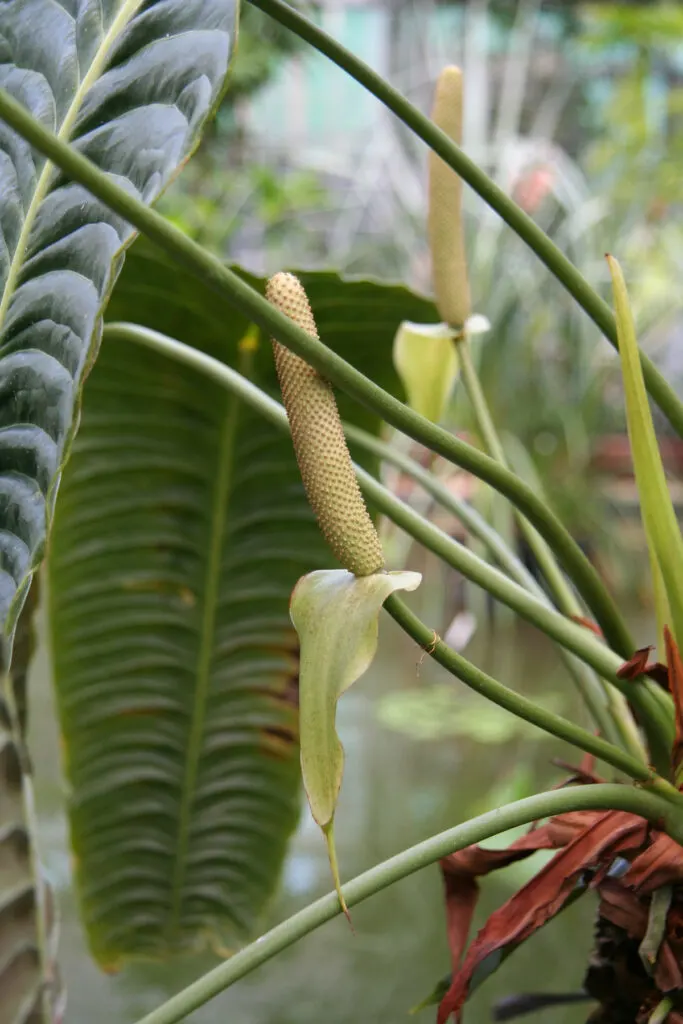
Many people refer to the spathe as the flower, but this is incorrect. The flowers are actually tiny and grow along the spadix.
7. PROPAGATION
If you have two plants that are flowering, you can cross pollinate. The male flowers produce pollen after the female flowers are receptive, so this reduces the chances of self-pollination.
The plant will produce small berries which contain seeds that you can plant in sphagnum moss to get started.
You can also cut off a piece of a stem that has a couple nodes and visible aerial roots and root in a moist potting mix. Providing high humidity will greatly benefit your cutting as it is developing.
KING ANTHURIUM VS. QUEEN ANTHURIUM?
Most collectors refer to Anthurium veitchii as the King Anthurium, and Anthurium warocqueanum as the Queen Anthurium.
IS ANTHURIUM VEITCHII TOXIC?
Like all Anthuriums, and aroids in general, they contain calcium oxalate crystals which is toxic to pets and people.
Be sure not to miss my Anthurium varieties blog post, showcasing many types of beautiful Anthurium species and cultivars that you can grow in your home.
Do you have an Anthurium veitchii? Comment below. I’d love to hear!

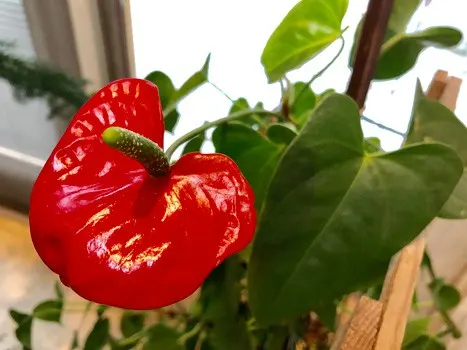
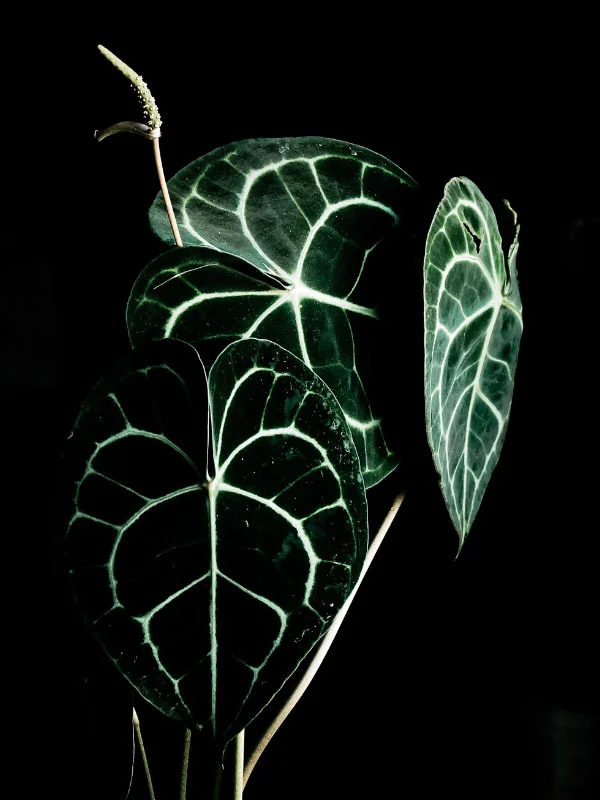
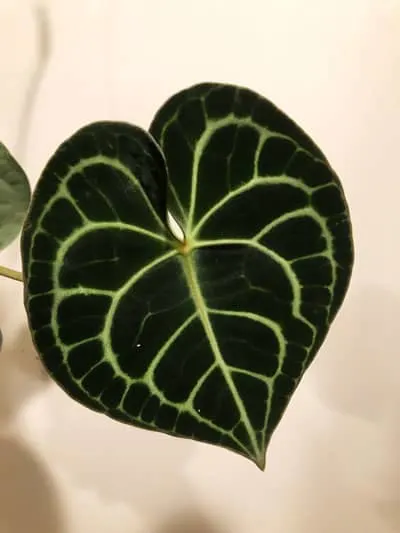
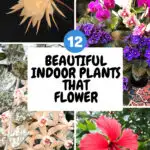
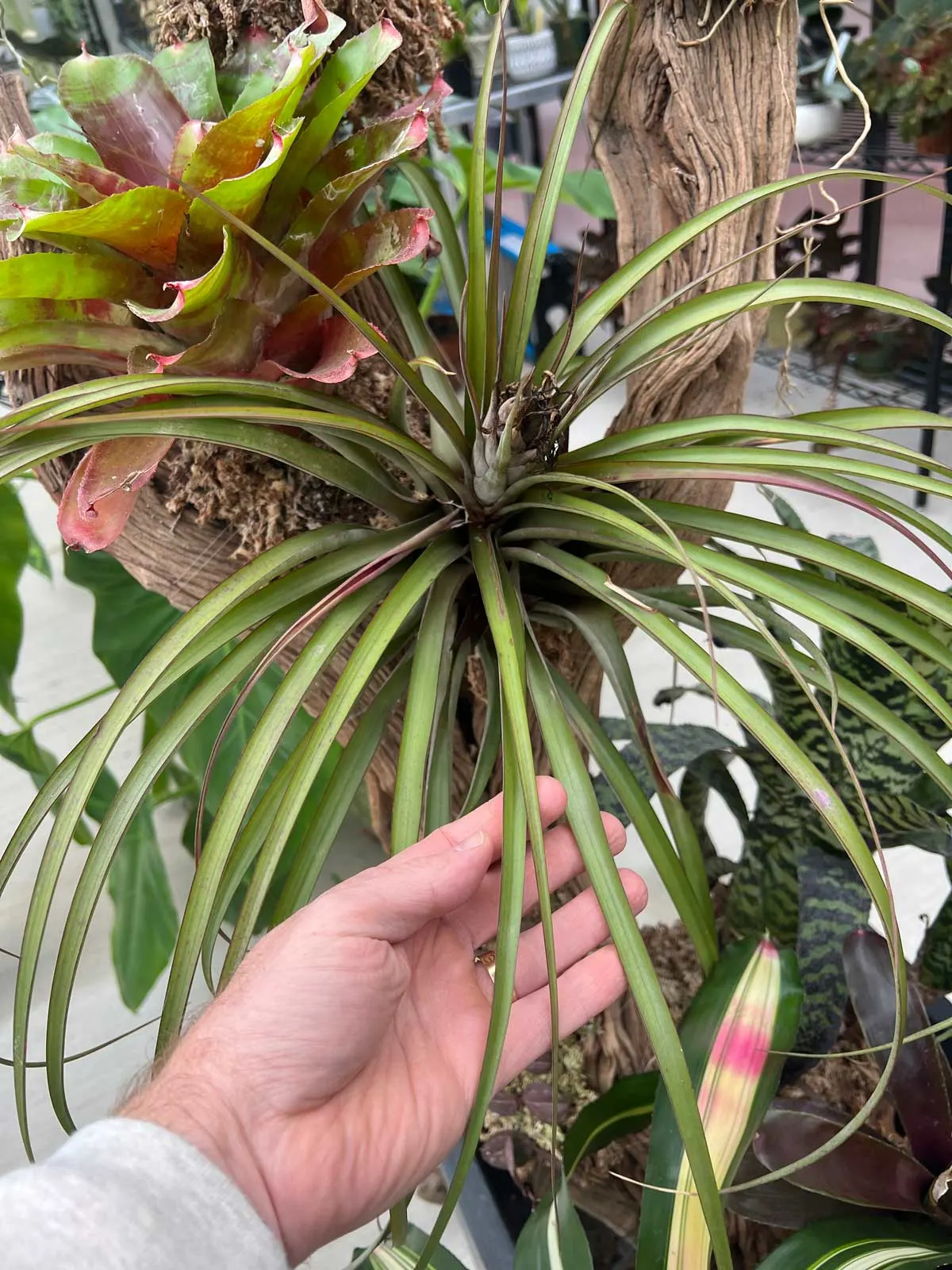
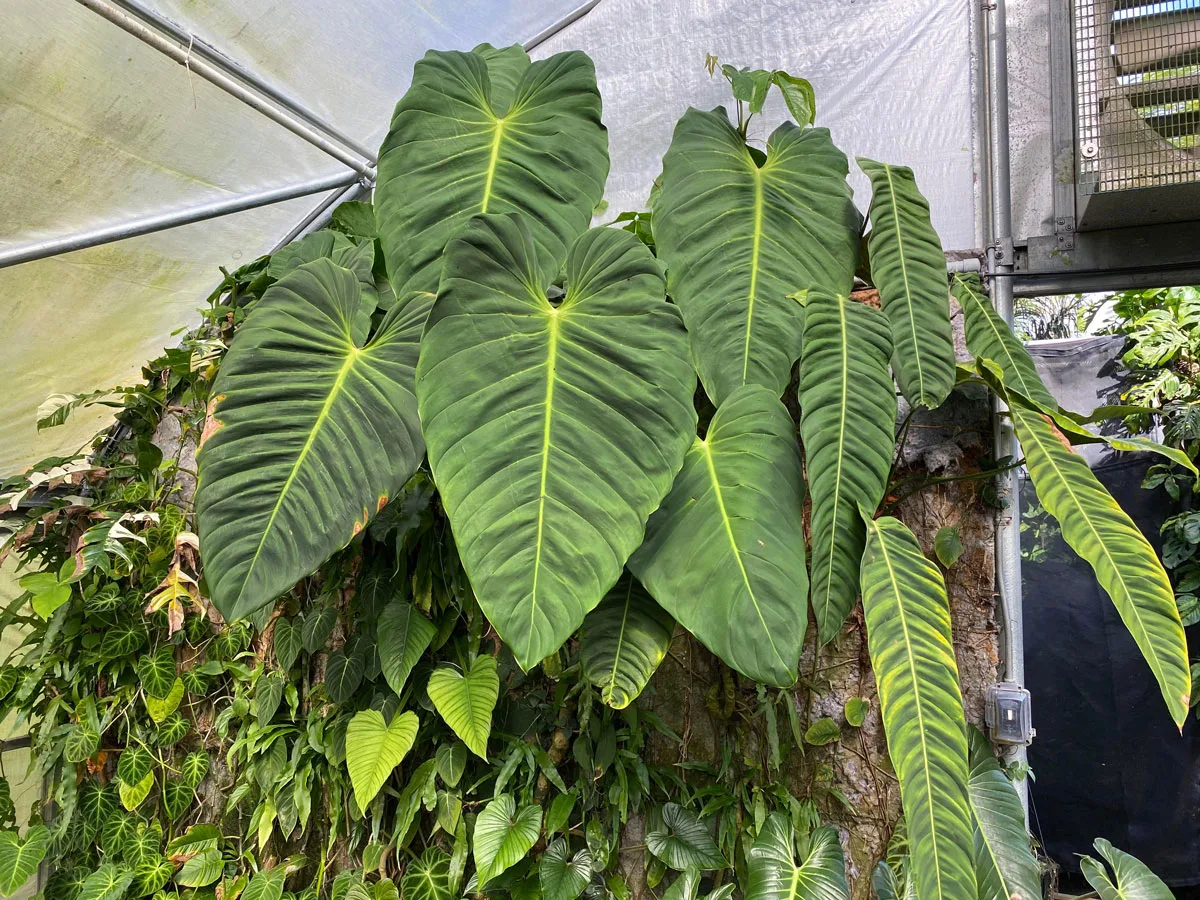
Erica
Saturday 30th of December 2023
Hi. I just got a veitchii has 2 bigger leafs and 4 smaller ones . The smaller ones are turning yellow. I have it 70 degrees and 70-85% humidity and bright grow light . It’s winter… roots are good. I have it in a clear pot with chunky soil mix and culler moss top. Is it just acclimating ? My anthurium that’s giving me yellow leaves. Should I be worried? Yellowed with in the first few days of receiving
Raffaele
Saturday 30th of December 2023
Hi Erica! How long have you had it? It could acclimating, and it could also be that you're not watering the plant enough. Really chunky mixes dry out very quickly and they usually have to be watered pretty frequently.
Sandra
Thursday 27th of July 2023
Hi everyone, I have 2 Vetchii wide vain and just bought 10 seeds but im not sure which one they are until they grow. I love this plant and have my oldest, 2 years growing in potting mix and perlite. They are doing very well getting at least 6 hours filtered light. Excellent article written about Vetchii. So much useful information . Thankyou for taking the time to hand down your knowledge. Greatly appreciated. Sandra in Australia
Raffaele
Saturday 29th of July 2023
So glad you enjoyed the post Sandra! Enjoy your plants!
Sri Dede
Tuesday 16th of May 2023
I have it. How long to grow it be long leaves. Thank you
Raffaele
Wednesday 17th of May 2023
It really depends on how big your plant is now and what your growing conditions are like...